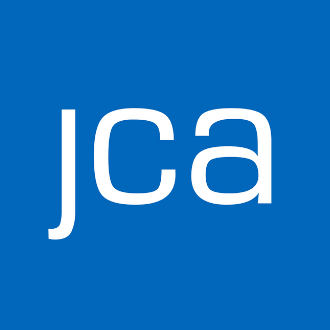Four Lessons for Fundraising from the World of Sales Enablement

People have passionate opinions on whether nonprofit fundraising is or is not like sales. While you may have strong feelings one way or another, the fact is that many of the techniques from the field of sales enablement also have applications in nonprofit fundraising.
What do we mean by sales enablement? Hubspot defines it as “the iterative process of providing your business’s sales team with the resources they need to close more deals. These resources may include content, tools, knowledge, and information to effectively sell your product or service to customers.” For our purposes, let’s call it prospect management enablement, the iterative process of providing your major gift officers (MGOs) with the resources they need to close more gifts. These resources may include content, tools, knowledge, and information to effectively ask for gifts for your priorities from your prospects.
See? Maybe nonprofits aren’t so different from sales! Here are some specific techniques you can use.
1. Content, Training, and Coaching
Your organization has a mission, and there are a lot of great reasons for people to support your work with their gifts. By crafting these reasons into carefully considered language and content specifically designed to advance the solicitation, you can make it easy for your gift officers to make the case. This means moving beyond general information from a brochure or a press release, and instead crafting talking points that lead to deeper conversations about involvement and engagement for the prospect.
Your top performing MGOs may already be doing this based on experience or innate skill. Our goal in systematically curating the fundraising conversation is to enable more MGOs to be more successful, more quickly. Training and coaching MGOs to utilize the methods you’re designing is critical to success. This can include small group role-play or reviewing a gift officer’s individual recording of a practice session to help MGOs make the content theirs. Training and coaching should be a regular part of managing major gift officers. Their content should be regularly updated, refreshed, and reinforced.
2. Create Response Sequences to Automate Certain Kinds of Donor Journeys
Your next major donor is lurking in the pool of people who made their first small gift, responded to a mailing, signed up for a community event, or received a degree from your institution. Of course, most of these people won’t be major gift prospects, but you can more easily identify the ones who are with automated response sequences. Use your CRM or marketing software to design a series of follow-up emails for the most common ways people become known to you, for example:
• First-time donors
• Donors to particular programs
• People who registered for or gave at events
• Donors who gave through a particular channel or in response to a particular appeal
These sequences should focus on thanking and educating. DON’T MAKE ANOTHER ASK until you’ve thoroughly thanked a donor – the 5:1 magic relationship ratio works for thanking and asking, too. Use your response sequences as a tool to qualify your donors as suspects for more engagement, i.e., if a prospect clicks on something in your donor journey series, it’s time to personally reach out.
You must be nuanced in your communication, though. Nothing could be more off-putting than having someone say “I saw you clicked on the link about…” Again, your curated content efforts will pay off, because your gift officers will have something in their toolkit to spark that conversation. Templates for the initial contact email will get MGOs out of the business of composing messages. By providing a starting point for the various types of discovery calls and contacts you are encouraging gift officers to make, you reduce the friction to making that first contact. You also reduce the amount of time people spend on these attempts, making them less costly overall.
3. Automate Prospecting
One feature that many sales enablement operations use is providing their representatives with an automated appointment setting system. Services like Appointlet, Calendly, and Doodle enable your MGOs to provide a link to prospects with available meeting time slots, taking the back-and-forth out of scheduling. If you work for a higher education or health care organization, your institution may already license one of these tools, so check with your IT department.
4. Measure and React
Ultimately, your goal is to raise more money, so it’s important to take a careful look at the facts around your philanthropy enablement strategies. You want to track what you’re doing and how effective it is. For example, consider operational tempo: these statistics provide information about how much work it’s taking to get in touch with suspects and prospects. You can also use this information to determine if you’re considering the right suspects and to forecast how much activity might be required to meet future goals. Data points to examine include:
• Ratio of attempts to contacts
• Ratio of contacts to substantive actions
• Time elapsed from initial attempt to substantive action
Look critically at data that measures the impact of your automation attempts. For example, examine A/B test donors who receive your automated sequences against those who don’t over time to evaluate the following:
• Retention
• Second gift size
• Value over time
• Value of prospects gleaned from sequence responders
Beyond the numbers, you need to work closely and fearlessly with your gift officers to assess and adjust the content and coaching you’re providing. Listen to their feedback, and adjust your tactics based on their real-world experience in using the tools you’re providing. Likewise, if nobody is using your “make an appointment with me” tools, don’t be afraid to discontinue their use.
Fundraising may not be sales, but both enterprises are focused on similar goals: building relationships that result in a financial investment. Don’t be afraid to be as ruthlessly strategic as our for-profit friends to advance your philanthropic mission!
Sign up for our JCA Newsletter to receive the latest tips from our consultants on fundraising best practices, optimizing your technology, and more.
